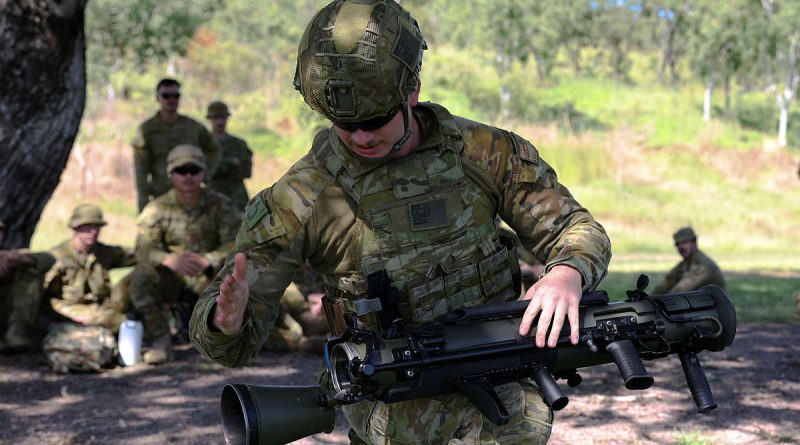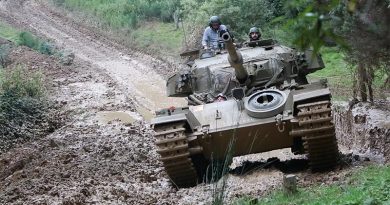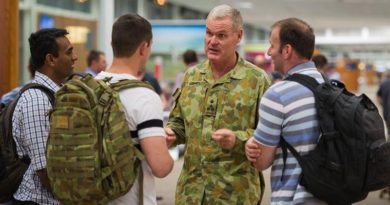1RAR boning up on anti-armour weapons

Their cannons, heavy machine guns and impressive speed make armoured vehicles perfect for annihilating dismounted infantry.
CAPTION: Private Jack Sewell, of Direct First Support Weapons Platoon, demonstrates a one-man reload of the 84mm Carl Gustav recoilless rifle. Story and photo by Warrant Officer Class 2 Max Bree.
But they are vulnerable when operating alone.
That’s why there’s more to destroying them than firing a rocket and receiving high-fives from your section.
Hours go into setting fire positions, exfil routes and mutually supporting arcs of fire, which is why soldiers from 1st Battalion, the Royal Australian Regiment (1RAR), went through a week of anti-armour familiarisation and revision with the battalion’s Direct First Support Weapons (DFSW) Platoon in Townsville.
Soldiers were taken through the basics of anti-armour theory and engagement, including vehicle recognition, to know what capabilities an enemy might bring.
They also planned anti-armour ambushes with the 84mm Carl Gustav recoilless rifle and were briefed on how DFSW can use Javelin missile launchers to provide support.
DFSW section commander Corporal Oliver Drews said modern militaries were primarily mechanised or motorised units, so it was important to engage armour as well as dismounts.
“For the 84, you could have between two to six tubes in an engagement, depending on the availability of manpower and weapons,” Corporal Drews said.
“Ideally, the more the better. And the larger space we have for the engagement, the better it is for us.”
Weapons need a good line of sight, but obstacles and vegetation should also be set between attackers and their targets, to slow any vehicles who may try and charge at the anti-armour team.
“If the enemy isn’t sure where they’ve been attacked from, you’ve got the advantage,” Corporal Drews said.
“Recon and terrain are always going to be your friend.”
An anti-armour team will usually have a high-value target list dictating which vehicle to engage. But when attacking a column, they may target the first or last vehicle to pin the formation.
“That means they’ll have less manoeuvrability and if you can identify the command variant, you want to target that as well,” Corporal Drews said.
While the battalion’s rifle companies don’t carry Javelins like DFSW, they do have the 84s.
An anti-armour team’s effectiveness depends on what weapons they have and what vehicles they’re up against, according to Corporal Drews.
“You need the element of surprise and a well-drilled section to engage successfully,” he said.
“I feel like we could engage very effectively from long distances, before we’d be noticed.”
The week of training with DFSW was part of 1RAR’s month-long training package in February and March that included rifle company soldiers being refreshed on first aid, combat shooting, and communications.
.
.

.
.






Dear Brian,
I see this Digger with a Carl Gustav recoiless launcher.
Question:
It’s my understanding, back in the Day of the Vietnam moratoriums, and
just a few years after We purchased the Carl Gustav from Sweden, a ban
supplying Ammo for this weapon, was instigated by Sweden against Australia
in protest of us being Combatants in the VN war. I want to know if they actually did that [rendering our possession of it useless].
Of course, after the West laid on its back with its legs in the air,
Sweden came good and supplied us again.
OR
Did we learn our lesson and now have an in-country ability to manufacture
Charlie Gustav Ammo in-house.
Yours Aye
Are we still being supplied